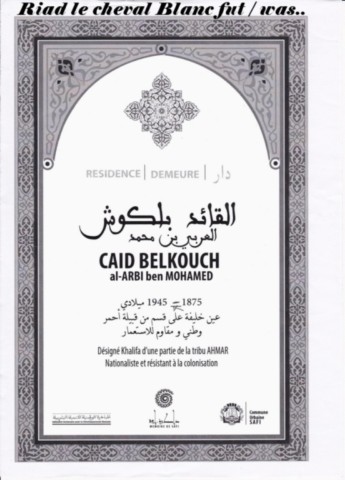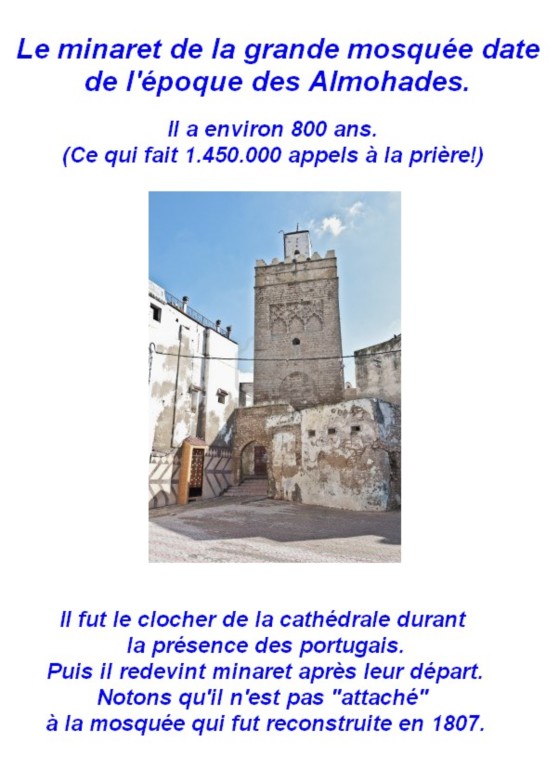Un bâtiment historique

The Riad was built around 1750.
Originally a riad is a traditional home built around a garden or a patio (by deformation it is called riad the guest houses while many do not correspond to this definition). Depending on the cities, the interior courtyard is more or less large, the parts surrounding it are generally long and narrow.
This narrowness is due to the fact that there were not large trees to produce long and thick beams.
The house belonged to the Caïd Belkouche, powerful Caïd of the Safi region which fought for the independence of Morocco. It is a historic home that was greater in the past, the little riad) on its left was probably part of it (we see the remains of a communication door), the ruined buildings and the other adjoining buildings are not very old .
There have been changes in the building, the staircase is not original but fortunately the main structure with the columns, the gallery rambards have not been deteriorated (note that the grids are not welded) .
The building was close to ruin, without any comfort, we did a lot of catering work for two and a half years while retaining the maximum of original materials and decoration.
The open front door of a house in Morocco does not allow you to see inside for discretion. Here, the main entrance door was located a little before in the street (painted green), this entrance was given a long time ago to make the burial of Lalla Mouali.
Medina buildings have all grown up for years, it is likely that the current second floor was the terrace.
In a riad there are no or few windows overlooking the outside in order to limit thermal exchanges and in order to guarantee safety to the inhabitants. The very high ceilings also limit the summer heat because the hot air is held at the top. There is also a thick layer of earth between each floor.
There is a well- opposite the chimney- which was partially rebuilt, it was drew water but it had to be more or less salty due to the proximity of the sea (below Safi There are a lot of caves and infiltration), which is why there is a large reserve of fresh water (rainwater) which is no longer used (in the basement next to the office), the Water was brought by terracotta pipes (exhibited in the fireplace).
The fireplace is not comparable to those found in colder countries where you can make big outbreak. The evacuation duct is very small. It was used to put the meals to cook and simmer on embers.
Originally, the port of Safi was right opposite, Marrakech was the big city in the kingdom, goods and diplomats arrived by the sea and entered the city by Bab Chaaba, our riad was therefore one of the great residences that welcomed merchants and dignitaries.
Avant ...après
Le minaret

Allah est le plus grand
J'atteste qu'il n'y a de vraie divinité, digne d’être adorée, qu'Allah
J'atteste que Muhammad est le Messager d’Allah
Accourez à la prière !
Accourez à la félicité !
Accourez à la meilleure action !
Allah est le plus grand
Il n'y a de vraie divinité, digne d’être adorée hormis Allah













